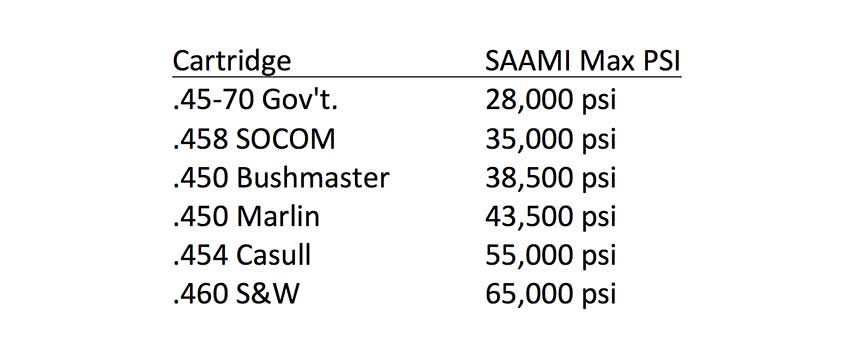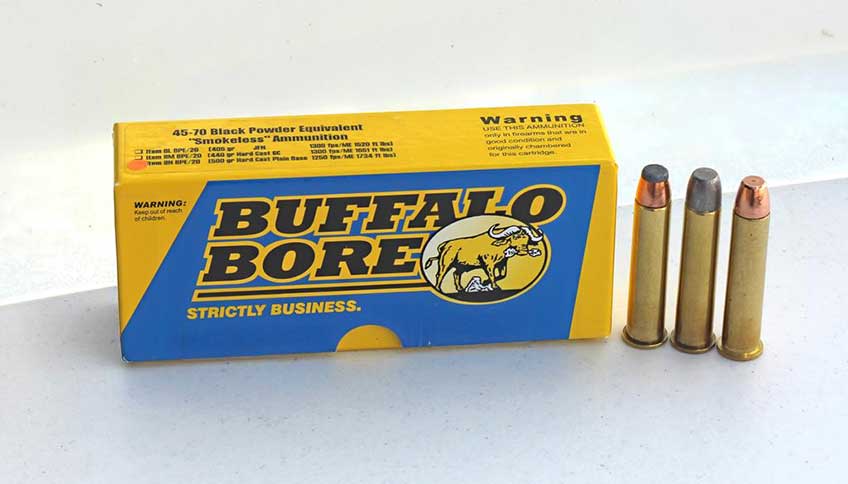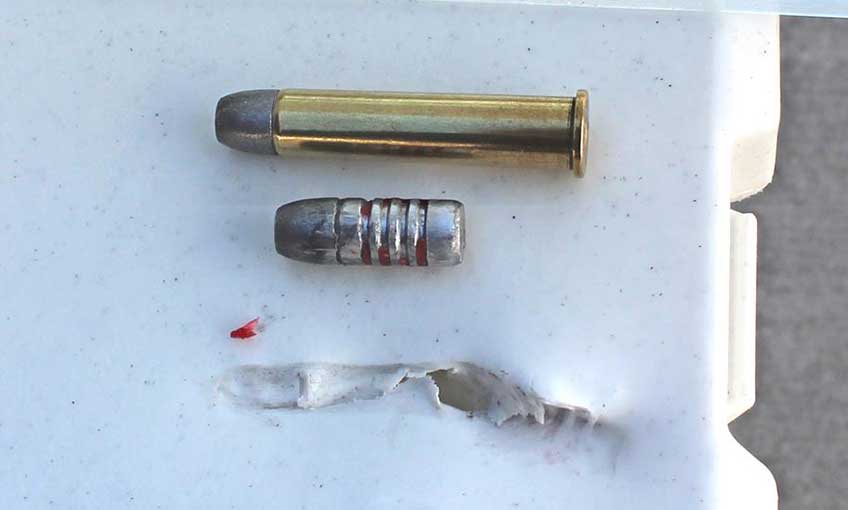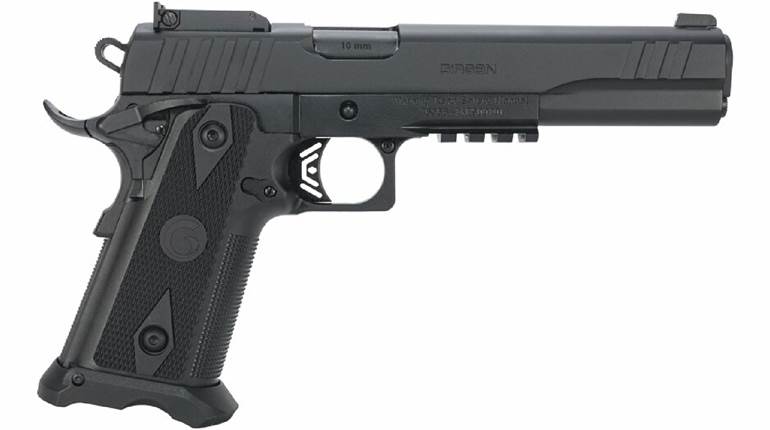
At the conclusion of the first set of range tests for the Magnum Research, Inc. custom 'Thunder Snub' BFR .45-70 Gov't. single-action revolver, there were a couple of questions left unanswered. First, with so many big-bore revolver rounds to choose from, why chamber this one for a 2.5" long rifle cartridge born in the 19th century? More importantly, what's really happening downrange after the bullets leave the barrel?
There's next-to-no ballistics data available for short-barrel .45-70 Gov't cartridge performance, and chronograph information only tells part of the story. Instead of confronting a few grizzly bears at close range to see how things worked out, firing the previously tested loads into gel blocks seemed like the best way to evaluate this unusual revolver’s ballistic potential.
I mentioned previously that the idea for building the Thunder Snub came out of a conversation with my cousin Steve. However, the idea took root because there were several advantages to building a big-bore handgun around the .45-70 Gov't. cartridge. My first thought was that I’m already familiar with the cartridge and shoot it in other platforms. The support gear was already in place and the BFR could be paired up with a rifle chambered in the same cartridge out in the field.

The .45-70 Gov't. is a well-known and widely appreciated cartridge. That directly affects ammunition availability, cost and load variety. It can be found almost anywhere in the country in stock at big-box stores, local gun dealers and through ammunition websites.
As of this writing, factory loads are running somewhere between $1 to $4 per shot and reloading supplies are easy to find. Factory-loaded bullet weights range from 225-gr. to 540-gr. in just about every bullet style favored for rifles. The .45-70 Gov't. isn't going to dry up and disappear like some of the more exotic or specialized cartridges.
A technical tidbit that's often overlooked with the .45-70 Gov't. cartridge is the relatively low level of pressure it produces. Take a look at SAAMI standard maximum pressure levels for the .45-70 Gov't. compared to five other .45-caliber revolver and rifle rounds the BFR revolver can be chambered in:

If the BFR can comfortably handle the much higher pressures levels of the hot .460 S&W, then the 57-percent reduction in pressure that the .45-70 Gov't. produces is a piece of cake for the platform to manage.
But is the 3" Thunder Snub .45-70 Gov't. 'enough gun' to be useful in the field? It’s a fair question, because the majority of modern, factory-produced cartridges are optimized for a particular range of barrel lengths. Modifying that length and the gun's action type has a direct impact on the ammunition's performance. That includes the bullet’s velocity, muzzle energy and accuracy potential.
In this case, a big-bore rifle cartridge is launching from a 3" barrel revolver. That's quite a drastic change of operational parameters from what it was designed for! Let’s take another look at the first set of test data produced using five different loads provided by Buffalo Bore Ammunition, Garrett Cartridge, Inc. and Underwood Ammo:

As expected, the Thunder Snub's short barrel and cylinder gap reduced the levels of pressure produced by the .45-70 Gov't. cartridges' powder charges. This in turn caused the bullet velocities and energy levels to drop. Even the Garrett load, made specifically for BFR revolvers, dropped because it's configured for models with 7.5" or 10" barrels.
The accuracy potential clearly changes as well. When shooting long guns chambered in .45-70 Gov't., I've knocked out five-shot groups around 2.75" in size at 100-yds. The 7.5" barrel BFR I worked with tapped out 3" group averages at 25-yds. with the Thunder Snub's groups opening up to around 3.5" at that same distance.

With all of these considerations in mind, the numbers were still impressive. The velocity and energy numbers definitely supported the idea that this somewhat experimental revolver could be used as a short range hunting handgun or for defense against dangerous game. But chronographs can’t tell us the whole story.
When the bullets strike soft tissue, how deeply will they penetrate? Will they maintain a straight trajectory or show signs of tumbling? Do the bullets hold their original shape, expand or break apart? Then there's that age old question regarding the performance of light weight bullets moving at higher velocities versus heavier bullets traveling at slower velocities. Thanks to Underwood Ammo, I had a speedster load in the mix for comparison.

The gel test was conducted using Clear Ballistics 10-percent synthetic gelatin molded into the 6" x 6" x 16" blocks favored for FBI testing. Individual rounds were fired into bare gelatin (no barriers or clothing) from a bench-rested distance of 10’.
This synthetic material is easier to work with in the field because, unlike protein-based gelatins, it's not temperature-sensitive, its translucence greatly simplifies the photography of results, and it can be melted down and reused. But it doesn't preserve the permanent wound cavity for evaluation like protein-based gelatin.

I didn't know what to expect in regards to penetration from the Thunder Snub, but heavy bullets tend to penetrate deeply. So, even though it seemed a bit optimistic at first, I set all four of the Clear Ballistics blocks I had end-to-end for a total of 64" of gelatin. The test was conducted outdoors in 60-degree Fahrenheit weather using gelatin that has been shot and re-molded several times. This means it contains some dust motes and the occasional fleck of shotshell buffer material.

I opted to start this test with the two hardest hitters in the felt recoil department (this time, I knew what to expect), the fastest load got the middle slot and the two black-powder-equivalent loads rounded things out.
The Garrett Cartridges, Inc. extended 540-gr. Hammer Head extra-hard cast lead flat-nose produced an authoritative thump and an impressive puff of dust as it hit the dirt berm about 30-yards behind the blocks.

At first I thought the shot missed, then I saw the black-ringed hole punched near the center of the front block. A closer inspection showed the bullet passed neatly through all 64" of gelatin in a tidy straight line without any indications of bullet wobble or bullet fragmentation.

Next up was the Buffalo Bore Magnum load topped with a 500-gr. Barnes full-metal jacket bullet. This is one of the hottest, deep-penetration .45-70 Gov’t. loads currently available commercially. I expected it to perform well, and it did.

It, too, made a beeline straight through all four blocks, exiting the end of the last block post-haste for a total of 64" of penetration. This bullet didn't leave any copper or lead particles in the gel, so it’s safe to assume it maintained its original weight.

It was time for the fast-flying Underwood Ammo Xtreme Hunter load topped with a 225-gr. Lehigh Defense fluted solid-copper bullet. It's 583-fps. faster, with 35 ft-lbs. more muzzle energy than the Buffalo Bore 500-gr. Magnum load.

The bullet stopped at 26.75", having swerved down to fracture the plastic table top. The bullet was facing backwards, indicating at least some tumbling. Despite its added speed, the bullet's relatively low mass caused it to lose momentum much more rapidly than the heavier bullets. The expended bullet weighed in at 224.7-gr., with the only deformations being the rifling marks from the barrel.

Buffalo Bore's Black-Powder-Equivalent .45-70 Gov't. 500-gr. hard-cast lead flat-nose bullet load was the slowest of the set with an average velocity of 883-fps. The first bullet fired swerved to the left and exited the blocks at the 26" mark, so I went ahead and fired a second shot.

This time, the bullet stopped at 57.50" after penetrating the bottom side of the gel block and put a good-sized dent in the table top. The bullet weighed in at 486.3-gr. with no lead left behind in the gelatin. A slight scuff mark on the bullet’s nose leads me to believe that its contact with the table top caused it to flip around and stop facing backwards. The fact that this bullet stopped against the table, instead of going through it, was a clear demonstration of how much less energy this bullet had compared to the Buffalo Bore 500-gr. Magnum load.

I was particularly interested to see how the last round of the test would perform. Buffalo Bore's Black Powder Equivalent 405-gr. jacketed soft point is loaded to a listed rifle velocity of 1300-fps. Several of the most common (and less expensive) .45-70 Gov't. factory loads stocked by big-box stores and gun shops are loaded to the same specifications.
It’s popular among retailers because cartridges loaded to these specifications are less likely to damage vintage firearms. The 405-gr. loads also have the advantage of producing more manageable levels of felt recoil with BFR revolvers than the heavy or hot loads. If you need to grab a couple of boxes of ammo from a local dealer on your way into the field, then this particular round is representative of the ammunition you're most likely to find.

This load yielded a muzzle energy average of 719 ft-lbs., which was the lowest energy level of the test set and only about 50-percent of the energy it could produce if fired from a rifle. No matter how good an expanding bullet's design may be, reducing its energy by half will most likely prevent it from expanding. The result will be penetration depths comparable to non-expanding bullets of the same weight. That proved to be the case with this load.

Extracted from the gelatin, the bullet weighed in at 399.7-gr. The exposed lead-tip had flattened out just a bit but the copper jacket remained intact with no discernible deformation beyond that of the rifling marks. However, this bullet did not tumble and it punched through 59.50" of gelatin without impacting the table top. Technically speaking, I have to say the bullet failed because it didn't expand. That being said, a non-expanding 405-gr. bullet capable of this much penetration is nothing to sneeze at.

There's an old saying that the proof is in the pudding. But when it comes to bullet performance, the proof is in the gelatin. The Magnum Research 3" BFR .45-70 Gov't Thunder Snub's bullet velocity and energy numbers were impressive to begin with. But adding a set of gel-block test results tells the rest of the story. This customized revolver and ammunition combination surprised me again. I thought it was a performer, but I wouldn't have guessed this short-barreled wheel gun was capable of clearing 64" of ballistic gelatin.

Once again, if you're looking at the BFR as a hunting handgun, the longer 7.5" and 10" barrels will serve your needs better than the 3" option tested here. But it's good to know that even with the barrel cut down to the shortest possible length, this BFR still packs plenty of punch!






































